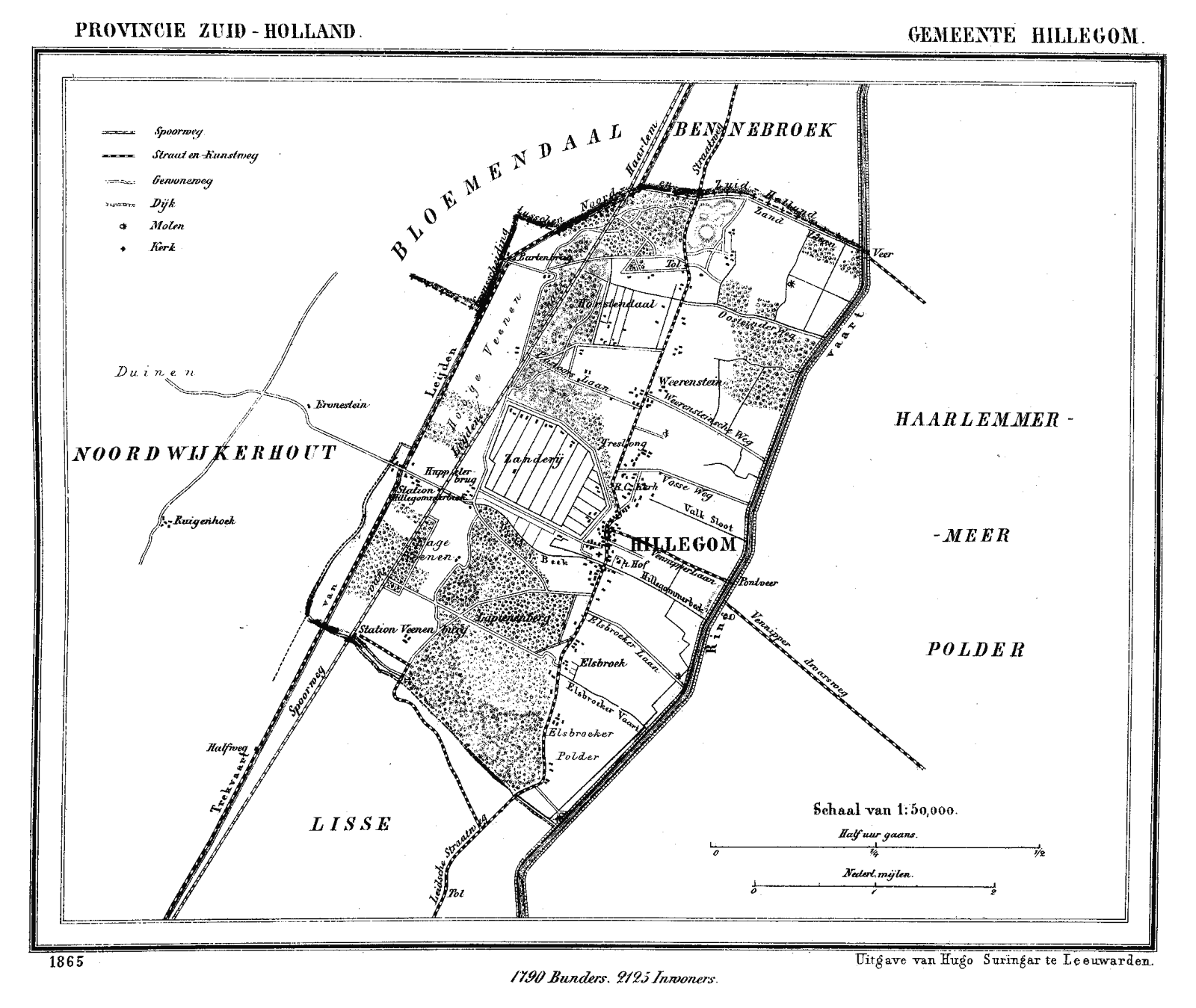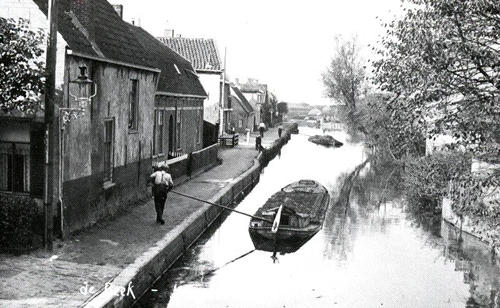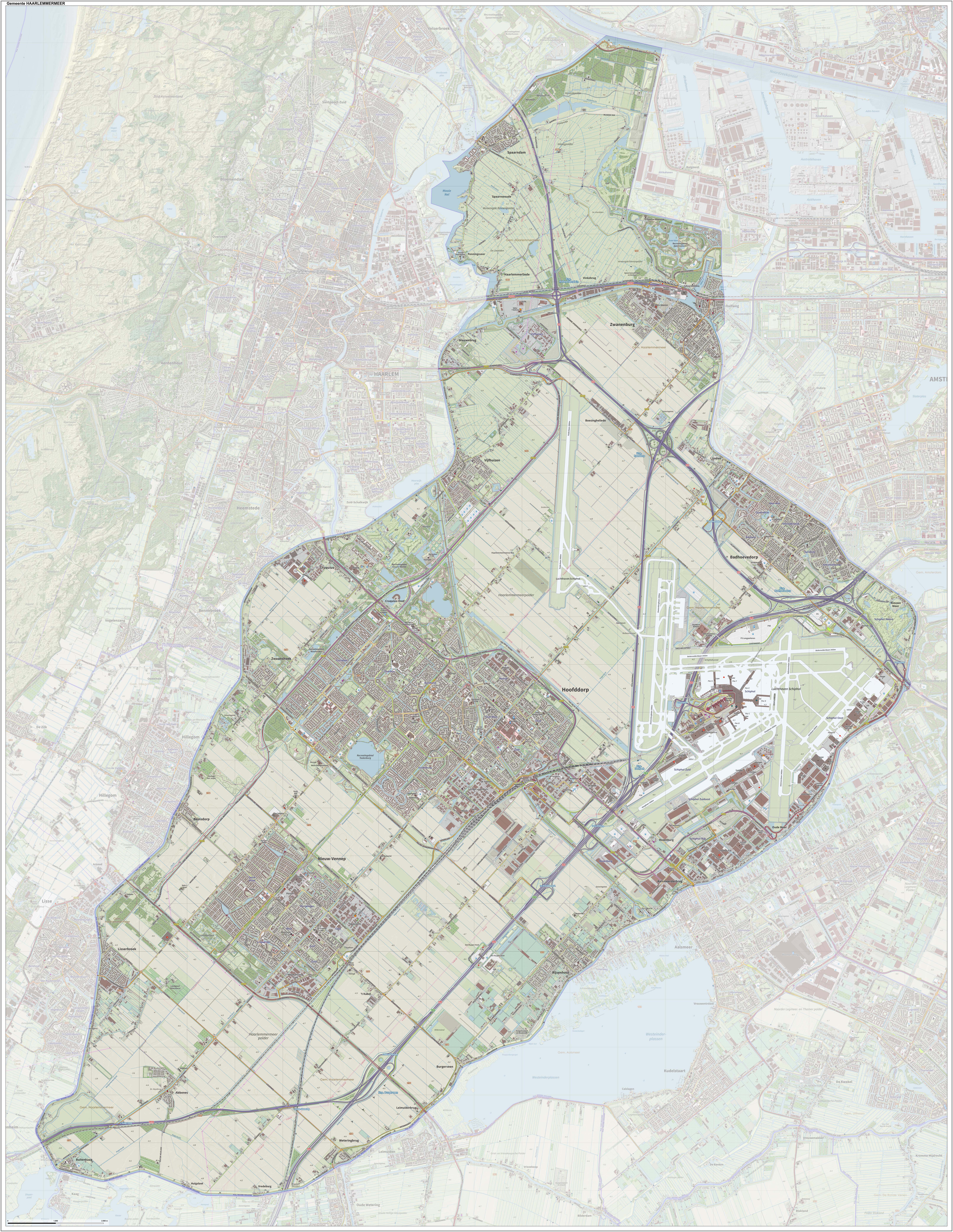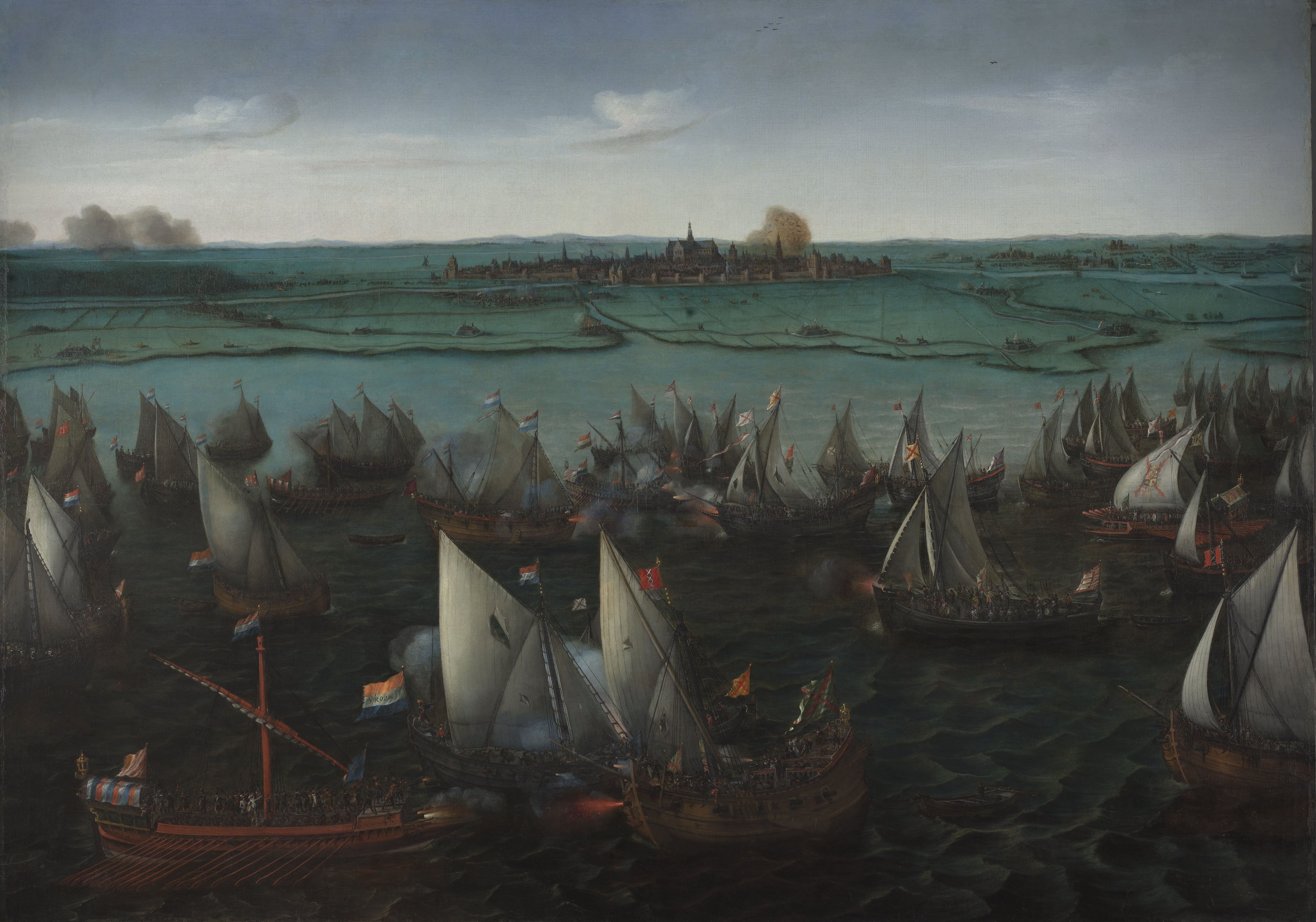|
Hillegom
Hillegom () is a town and Municipalities of the Netherlands, municipality in the Western Netherlands, in the Provinces of the Netherlands, province of South Holland. Hillegom is part of an area called the Duin- en Bollenstreek ("Dune and Bulb Region"). As such, a large portion of the local economy was traditionally geared to the cultivation of bulb flowers. The name Hillegom is derived from the abbey named ''Hijlighem'' (Old Frankish for "Holy Home"). This abbey no longer exists. The current Lord of Hillegom is Six family, Jan Six X. History Hillegom was formed on the eastern edge of the coastal dunes where the old Leiden to Haarlem route crossed the ''Hillegommerbeek'' (Hillegom's Creek), not far from the shores of the ''Haarlemmermeer'' (Haarlem's Lake). Places with the suffix "-heim" (or variant spellings) usually developed before the year 1000 and therefore it is assumed that this may apply to Hillegom as well. In 1150 the abbot of Egmond Abbey, Egmond had the rights to naming ... [...More Info...] [...Related Items...] OR: [Wikipedia] [Google] [Baidu] |
Hillegom 1865
Hillegom () is a town and municipality in the Western Netherlands, in the province of South Holland. Hillegom is part of an area called the Duin- en Bollenstreek ("Dune and Bulb Region"). As such, a large portion of the local economy was traditionally geared to the cultivation of bulb flowers. The name Hillegom is derived from the abbey named ''Hijlighem'' (Old Frankish for "Holy Home"). This abbey no longer exists. The current Lord of Hillegom is Jan Six X. History Hillegom was formed on the eastern edge of the coastal dunes where the old Leiden to Haarlem route crossed the ''Hillegommerbeek'' (Hillegom's Creek), not far from the shores of the ''Haarlemmermeer'' (Haarlem's Lake). Places with the suffix "-heim" (or variant spellings) usually developed before the year 1000 and therefore it is assumed that this may apply to Hillegom as well. In 1150 the abbot of Egmond had the rights to naming priests in Hillegom, indicating that a church or chapel existed there. In 1248 the count ... [...More Info...] [...Related Items...] OR: [Wikipedia] [Google] [Baidu] |
Duin- En Bollenstreek
The Duin- en Bollenstreek (; Dutch for "Dune and Bulb Region") is a region in the Western Netherlands, that features coastal dunes and the cultivation of Bulb, flower bulbs. Situated at the heart of historical Holland nearby the city of Leiden, South Holland, it is bordered by The Hague to the west and Haarlem to the north. The combination of beaches, flower fields, lakes and history makes this area attractive to tourists. Composition and name The Dune and Bulb Region stretches from the area around the lower reaches of the Oude Rijn (Utrecht and South Holland), Old Rhine west of Leiden to just south of Haarlem. Since it is not a municipality or administrative region, the region's borders are not clearly defined. The Dune and Bulb Region proper is made up of the towns from Katwijk to Hillegom, and from the coast to the Kaag Lakes. Officials consider six municipalities to be part of this region: Hillegom, Katwijk, Lisse, Noordwijk, Noordwijkerhout and Teylingen. However, towns jus ... [...More Info...] [...Related Items...] OR: [Wikipedia] [Google] [Baidu] |
Six Family
Six is a well-known Dutch family from Amsterdam. The family originally came from the region of Lille in the north of France. History The name Six is an abbreviation of Sixtus, a name given to the sixth child of a family. The first known member, Guillaume Six, was a linen weaver in Armentières and Lille. His son Charles Six moved the family to Amsterdam circa 1586. Charles Six's children were: * Guillaume Six (1563–1619), ancestor of the Six van Oterleek branch of the family * Chrétienne Six (1566–1645), married Nicolaus Mulerius (1564–1630), medic and astronomer * Jean Six (1575–1617), ancestor of the Six van Hillegom branch of the family Both branches of the family have been raised to the Dutch nobility at the rank of baron, with other members of the family carrying the honorific of Jonkheer. Six van Oterleek (1772–1833) served as Finance Minister of the Netherlands 1814–1821. He was raised to the nobility with the title Jonkheer in 1815, and raised to the he ... [...More Info...] [...Related Items...] OR: [Wikipedia] [Google] [Baidu] |
Municipalities Of The Netherlands
Since 1 January 2023, there have been 342 regular municipalities ( ; Grammatical number#Overview, sing. ) and three Caribbean Netherlands, special municipalities ( ) in the Netherlands. The latter is the status of three of the six island territories that make up the Dutch Caribbean. Municipalities are the second-level administrative division, or public body (Netherlands), public bodies (), in the Netherlands and are subdivisions of their respective provinces of the Netherlands, provinces. Their duties are delegated to them by the Cabinet of the Netherlands, central government and they are ruled by a municipal council (Netherlands), municipal council that is elected every four years. Municipal merger (politics), mergers have reduced the total number of municipalities by two-thirds since the first official boundaries were created in the mid 19th century. Municipalities themselves are informally subdivided into districts and neighbourhoods for administrative and statistical ... [...More Info...] [...Related Items...] OR: [Wikipedia] [Google] [Baidu] |
South Holland
South Holland ( ) is a province of the Netherlands with a population of over 3.8 million as of January 2023 and a population density of about , making it the country's most populous province and one of the world's most densely populated areas. Situated on the North Sea in the west of the Netherlands, South Holland covers an area of , of which is water. It borders North Holland to the north, Utrecht and Gelderland to the east, and North Brabant and Zeeland to the south. The provincial capital is the Dutch seat of government The Hague, while its largest city is Rotterdam. The Rhine-Meuse-Scheldt delta drains through South Holland into the North Sea. Europe's busiest seaport, the Port of Rotterdam, is located in South Holland. History Early history Archaeological discoveries in Hardinxveld-Giessendam indicate that the area of South Holland has been inhabited since at least c. 7,500 years before present, probably by nomadic hunter-gatherers. Agriculture and permanent settlemen ... [...More Info...] [...Related Items...] OR: [Wikipedia] [Google] [Baidu] |
Telephone Numbers In The Netherlands
Telephone numbers in the Netherlands are administered by the Ministry of Economic Affairs, Agriculture and Innovation of the Netherlands. The telephone numbering plan may be grouped into three general categories: geographical numbers, non-geographical numbers, and numbers for public services. Geographical telephone numbers have nine digits and consist of an area code of two or three digits and a subscriber number of seven or six digits, respectively. When dialled within the country, the number must be prefixed with the trunk access code 0, identifying a destination telephone line in the Dutch telephone network. Non-geographical numbers have no fixed length, but also require the dialling of the trunk access code (0). They are used for mobile telephone networks and other designated service types, such as toll-free dialling, Internet access, voice over IP, restricted audiences, and information resources. In addition, special service numbers exist for emergency response, directory ... [...More Info...] [...Related Items...] OR: [Wikipedia] [Google] [Baidu] |
Egmond Abbey
Egmond Abbey or St. Adalbert's Abbey (, ''Sint-Adelbertabdij'') is a Rule of St. Benedict, Benedictine monastery of the Congregation of the Annunciation, situated in Egmond-Binnen, in the municipality of Bergen, North Holland, Bergen, in the Netherlands, Dutch province of North Holland. Founded in 920-925, and destroyed during the Protestant Reformation, Reformation, it was re-founded in 1935 as the present ''Sint-Adelbertabdij'', in the Roman Catholic Diocese of Haarlem-Amsterdam, Diocese of Haarlem. History Egmond was the oldest monastery of the Holland region. According to tradition, the Benedictine abbey was founded by Dirk I, Count of Holland, in about 920-925. It was a nunnery erected near a small wooden church built over the grave of Saint Adalbert of Egmond, Adalbert. In about 950 work began on a stone church to replace the wooden one, as a gift from Dirk II, Count of Holland, and his wife Hildegard of Flanders, Hildegard, to house the relics of Saint Adalbert. The conse ... [...More Info...] [...Related Items...] OR: [Wikipedia] [Google] [Baidu] |
Haarlemmermeer
Haarlemmermeer () is a List of municipalities of the Netherlands, municipality in the west of the Netherlands, in the Provinces of the Netherlands, province of North Holland. Haarlemmermeer is a polder, consisting of land reclaimed from water. The name Haarlemmermeer means 'Haarlem's lake', referring to the body of water from which the region was reclaimed in the 19th century. Haarlemmermeer's main town is Hoofddorp, which has a population of 76,660. Hoofddorp, along with the rapidly growing towns of Nieuw-Vennep and Badhoevedorp, are part of the Randstad agglomeration. The main international airport of the Netherlands, Amsterdam Airport Schiphol, Schiphol, is located in Haarlemmermeer. History The original Haarlemmermeer lake is said to have been mostly a peat bog, a relic of a northern arm of the Rhine which passed through the district in Ancient Rome, Roman times. In 1531, the original Haarlemmermeer had an area of , and near it were three smaller lakes: the Leidsche Meer (Leid ... [...More Info...] [...Related Items...] OR: [Wikipedia] [Google] [Baidu] |
Les Gueux
''Geuzen'' (; ; ) was a name assumed by the confederacy of Calvinist Dutch nobles, who from 1566 opposed Spanish rule in the Netherlands. The most successful group of them operated at sea, and so were called ''Watergeuzen'' (; ; ). In the Eighty Years' War, the Capture of Brielle by the ''Watergeuzen'' in 1572 provided the first foothold on land for the rebels, who would conquer the northern Netherlands and establish an independent Dutch Republic. They can be considered either as privateers or pirates, depending on the circumstances or motivations. Origin of the name The leaders of the nobles who signed a solemn league known as the Compromise of Nobles, by which they bound themselves to assist in defending the rights and liberties of the Netherlands against the civil and religious despotism of Philip II of Spain, were Louis of Nassau and Hendrick van Brederode. On 5 April 1566, permission was obtained for the confederates to present a petition of grievances, called the Requ ... [...More Info...] [...Related Items...] OR: [Wikipedia] [Google] [Baidu] |
Eighty Years' War
The Eighty Years' War or Dutch Revolt (; 1566/1568–1648) was an armed conflict in the Habsburg Netherlands between disparate groups of rebels and the Spanish Empire, Spanish government. The Origins of the Eighty Years' War, causes of the war included the Reformation, Centralised state, centralisation, excessive taxation, and the rights and privileges of the Dutch nobility and cities. After Eighty Years' War, 1566–1572, the initial stages, Philip II of Spain, the sovereign of the Netherlands, deployed Army of Flanders, his armies and Eighty Years' War, 1572–1576, regained control over most of the rebel-held territories. However, Spanish Fury, widespread mutinies in the Spanish army caused a general uprising. Under the leadership of the exiled William the Silent, the Catholic and Protestant-dominated provinces sought to establish religious peace while jointly opposing the king's regime with the Pacification of Ghent, but the Eighty Years' War, 1576–1579, general rebelli ... [...More Info...] [...Related Items...] OR: [Wikipedia] [Google] [Baidu] |
Fiefdom
A fief (; ) was a central element in medieval contracts based on feudal law. It consisted of a form of property holding or other rights granted by an overlord to a vassal, who held it in fealty or "in fee" in return for a form of feudal allegiance, services or payments. The fees were often lands, land revenue or revenue-producing real property like a watermill, held in feudal land tenure: these are typically known as fiefs or fiefdoms. However, not only land but anything of value could be held in fee, including governmental office, rights of exploitation such as hunting, fishing or felling trees, monopolies in trade, money rents and tax farms. There never existed a standard feudal system, nor did there exist only one type of fief. Over the ages, depending on the region, there was a broad variety of customs using the same basic legal principles in many variations. Terminology In ancient Rome, a " benefice" (from the Latin noun , meaning "benefit") was a gift of land () f ... [...More Info...] [...Related Items...] OR: [Wikipedia] [Google] [Baidu] |






